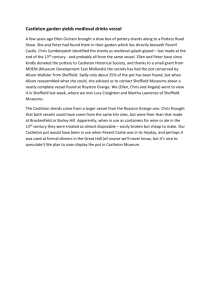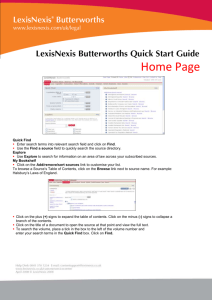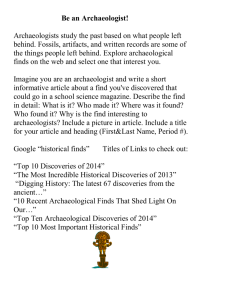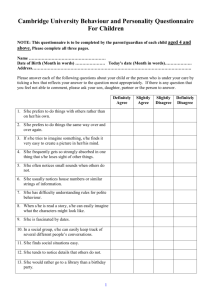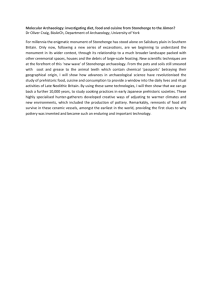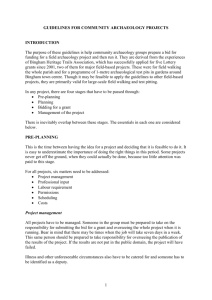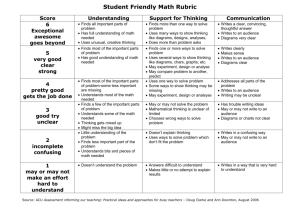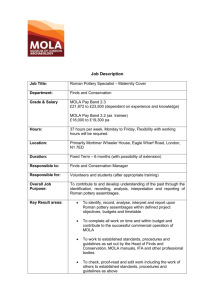Arch_update_2011 - Castleton Historical Society
advertisement
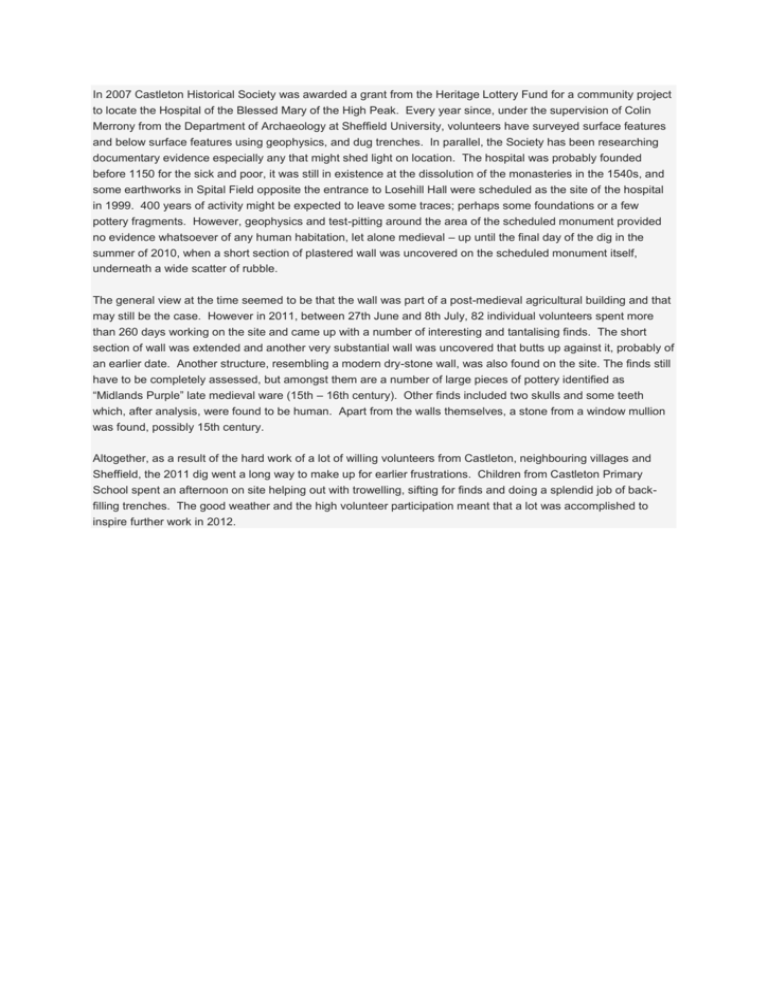
In 2007 Castleton Historical Society was awarded a grant from the Heritage Lottery Fund for a community project to locate the Hospital of the Blessed Mary of the High Peak. Every year since, under the supervision of Colin Merrony from the Department of Archaeology at Sheffield University, volunteers have surveyed surface features and below surface features using geophysics, and dug trenches. In parallel, the Society has been researching documentary evidence especially any that might shed light on location. The hospital was probably founded before 1150 for the sick and poor, it was still in existence at the dissolution of the monasteries in the 1540s, and some earthworks in Spital Field opposite the entrance to Losehill Hall were scheduled as the site of the hospital in 1999. 400 years of activity might be expected to leave some traces; perhaps some foundations or a few pottery fragments. However, geophysics and test-pitting around the area of the scheduled monument provided no evidence whatsoever of any human habitation, let alone medieval – up until the final day of the dig in the summer of 2010, when a short section of plastered wall was uncovered on the scheduled monument itself, underneath a wide scatter of rubble. The general view at the time seemed to be that the wall was part of a post-medieval agricultural building and that may still be the case. However in 2011, between 27th June and 8th July, 82 individual volunteers spent more than 260 days working on the site and came up with a number of interesting and tantalising finds. The short section of wall was extended and another very substantial wall was uncovered that butts up against it, probably of an earlier date. Another structure, resembling a modern dry-stone wall, was also found on the site. The finds still have to be completely assessed, but amongst them are a number of large pieces of pottery identified as “Midlands Purple” late medieval ware (15th – 16th century). Other finds included two skulls and some teeth which, after analysis, were found to be human. Apart from the walls themselves, a stone from a window mullion was found, possibly 15th century. Altogether, as a result of the hard work of a lot of willing volunteers from Castleton, neighbouring villages and Sheffield, the 2011 dig went a long way to make up for earlier frustrations. Children from Castleton Primary School spent an afternoon on site helping out with trowelling, sifting for finds and doing a splendid job of backfilling trenches. The good weather and the high volunteer participation meant that a lot was accomplished to inspire further work in 2012.
